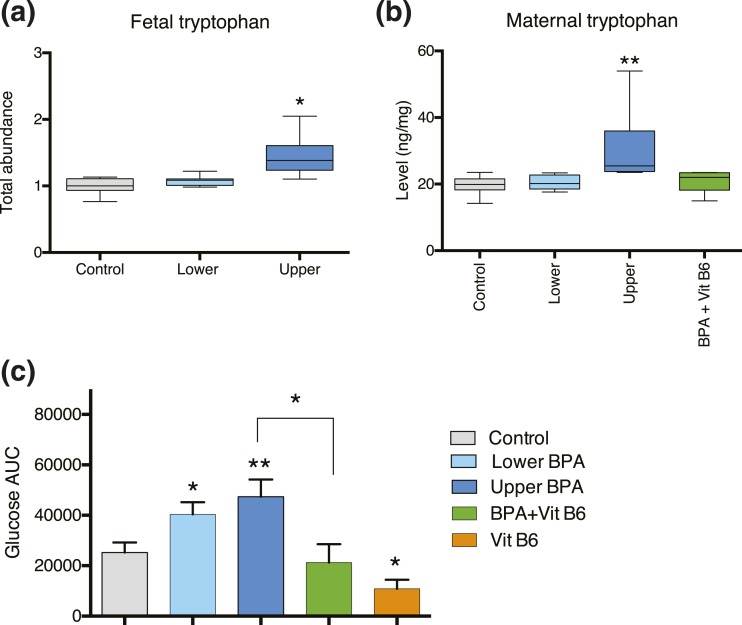Figure 3.
Tryptophan metabolism and vitamin B6 deficiency are linked to BPA-induced gestational glucose intolerance. (a) Metabolomic analysis revealed that liver from upper-dose BPA−exposed fetuses had increased tryptophan levels relative to that of controls. (b) LC-MS assay shows that liver from upper-dose BPA−exposed pregnant mice (dark blue) had elevated tryptophan levels compared with levels in control pregnant mice (gray); however, the level decreased to control-like values when the mice were supplemented with vitamin B6 (green). (c) GTTs show that upper-dose BPA−exposed pregnant mice (dark blue) had a significantly increased glucose concentration relative to that of controls (gray). In contrast, vitamin B6 supplementation in upper-dose BPA−exposed pregnant mice (green) normalized the glucose level to a control-like value. Our data also show that pregnant mice supplemented with vitamin B6 alone (orange) had a significantly lower glucose concentration compared with that of controls. *P < 0.05; **P < 0.001; the pregnant mouse was used as the unit of measurement.

